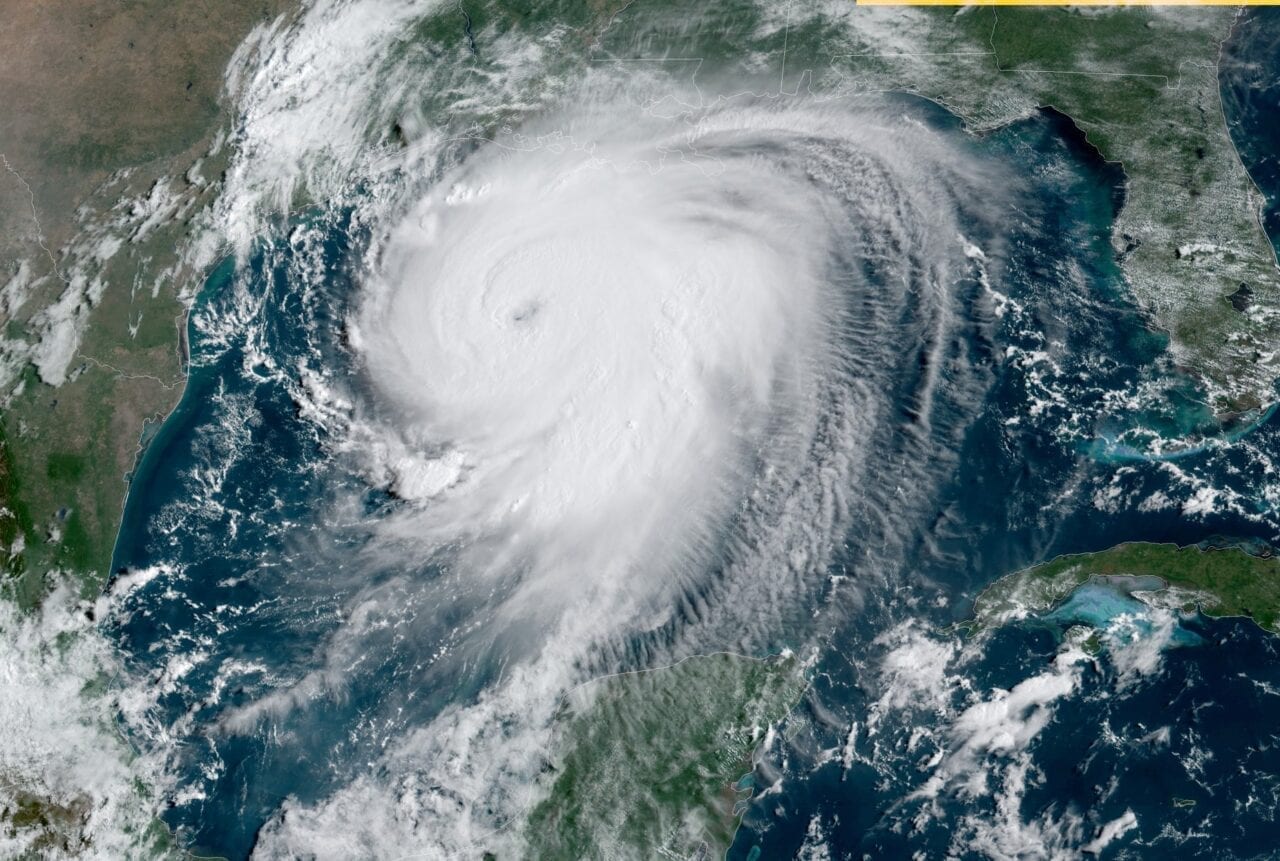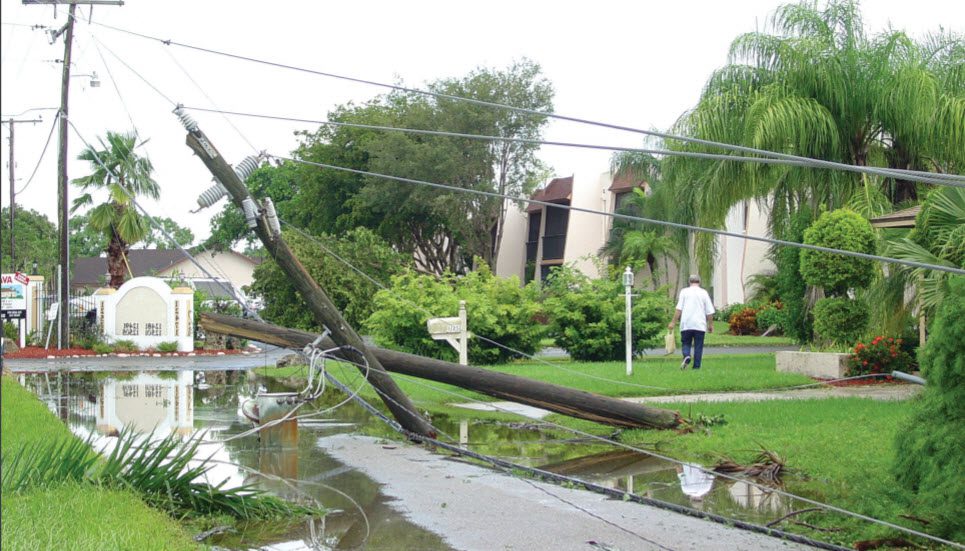Preparing the Grid for an Above-Average Hurricane Season
Credit to Author: Anthony Allard| Date: Fri, 19 Aug 2022 03:00:38 +0000

Hurricanes are one of the most destructive forces in nature. Hurricane season in North America runs from June 1 to November 30, peaking between August and September, and 2022 would be the seventh straight year of above-average hurricane activity, if predictions are correct.
A typical Atlantic hurricane season has 14 named storms, seven hurricanes, and three major hurricanes, according to the National Hurricane Center. The National Oceanic and Atmospheric Administration (NOAA) is forecasting a 65% chance that the 2022 hurricane season will be above average, with a 25% chance of near-normal activity and just a 10% chance of below-normal tropical cyclone numbers.
COMMENTARY
NOAA also tracks “billion-dollar storms,” and these are increasing in frequency and intensity. While the U.S. has yet to experience devastating hurricane activity this season, we have already seen the impact of heatwaves, wildfires, and floods, which have negatively affected many communities that are not entirely prepared for this extreme weather. As we look out into a future skewed by climate change, planning for unforeseen weather emergencies has become an increasingly important requirement for utilities and the communities they serve.
In the face of increasing unpredictability and a general trend toward more frequent storms, there needs to be a greater emphasis on preparing grids for extreme weather to avoid causing widespread, long-lasting power outages. Utilities that are not well-prepared for hurricanes and other weather emergencies run the risk of leaving customers in the dark—unhappy, unsafe, and with significant disruptions to their daily lives.
How Hurricanes and Extreme Weather Events Impact the Grid
Hurricanes, heatwaves, and other weather events can severely affect utilities and their ability to provide consistent, reliable power. Hurricanes in particular are producing heavier rains and stronger winds due to climate change, and their impact on power grids is increasing accordingly.

The potential for damage caused by hurricanes is well-known; power lines can be displaced or destroyed by high winds and falling trees, while substations and other facilities can be overcome by flooding. We also are seeing an overall increase in temperatures across the globe and more frequent heatwaves, which are resulting in an unanticipated demand for air conditioning, refrigeration, and other critical services.
This is putting power grids under increasing pressure, aggravating the risk of weather-related outages. Both hot and cold weather extremes—such as Texas storm Uri’s deep freeze, and this year’s heatwaves across the U.S.—can jeopardize the grid’s reliability and resilience. While these challenges can’t be avoided entirely, steps can be taken to mitigate the consequences.
Building a More Resilient and Sustainable Grid: Planning and Preparedness
There are a variety of steps that utilities can take to harden grid systems and make them more robust and resilient. Many of these preparations can be made in advance to enable utilities to respond more effectively when a storm does come.
The first step in modernizing the grid is developing a solid recovery or preparedness plan that is customized to the needs of the individual utility. It is critical that substation power equipment can be returned to service as quickly and safely as possible, regardless of whether an outage is planned or unplanned.
Utilities also need to engage proactively in risk mitigation, an important aspect of which is vegetation management—downed trees or fallen limbs account for a substantial percentage of outages. Today, utilities can use satellite imagery, drone footage, and other aerial and fixed imagery, coupled with artificial intelligence (AI) to proactively monitor their infrastructure to identify the risk of outages caused by improperly managed vegetation. This process can improve the performance of the grid in storms by “hardening” transmission and distribution circuits to mitigate storm-related outages. This approach can also reduce routine operation and maintenance costs, an added benefit.

For coastal utilities or those located in inland flood plains, erratic weather has increased the need to protect substations against floods. This can include building dams, walls, distributed and/or elevated relay panels and raising transformers, control houses, and other major substation components well above flood level.
Substations can be elevated using gas-insulated substation (GIS) technology. Additionally, pre-positioning modular equipment that can be deployed quickly to backstop major systems in the case of a disaster, such as modular, mobile substations, can vastly reduce the time needed to replace inoperable equipment damaged by major disruptive events, (from a previous average of 18 months to as little as seven days).
Building a More Resilient and Sustainable Grid: Introducing New Technologies
There are a variety of new and emerging technologies that can enable utilities to mount a more effective storm response.
Data analysis has an increasingly important role to play. AI applications, for instance, can help predict the anticipated impact of a forecasted storm by matching the characteristics of the oncoming weather to those of previous storms, and analyzing the kinds of the damage caused to the grid in those instances.
These applications can analyze the type of damage caused by previous storms, the locations of that damage, and required resources in terms of maintenance crews and materials. Armed with this information, utilities can preemptively stage resources to facilitate a quicker response.
One key step in this process is to move toward the establishment of an intelligent, “self-healing” grid that uses a smart meter and field sensor information to quickly identify, isolate, and restore power outages. Utilities can more widely use smart devices like reclosers and distribution automation switches, to clear, isolate and make a back-feed connection to re-energize the isolated, undamaged section of a smart meter’s feeder. On a looped feeder with a normally open connection point, this process can be completed in 100 milliseconds.
Smart meters can determine the extent of an outage and identify the protective device (breaker, recloser or fuse) that was used to isolate the fault that initiated the outage, and ultimately clear that fault. This process is particularly helpful when a utility does not have a field area network and communications-enabled smart sensors or smart devices. Many utilities are still assessing the role of advanced metering infrastructure (AMI) communications for operations, but interest is accelerating.
Utilities can also invest in developing a proactive Asset Lifecycle Management (ALM) process to identify what equipment represents a potential point of failure, and should therefore be upgraded or replaced with more resilient components. This approach can help to harden the grid to make it more capable maintaining operations in the fact of extreme weather events.
Deploying more robust energy storage systems, particularly paired with microgrid technology, can provide backup power in case of a local failure. This is particularly important for critical loads, such as for hospitals and similar public infrastructure, and is also applicable to remote communities or towns that experience frequent disruptions to their grid connections.
Overall, building a more resilient grid can lower operating costs, ultimately delivering significant savings in terms of money and energy. Reducing the operations and maintenance expenses associated with storm response is a major benefit to utilities, especially if rate-based capital investments can improve storm hardening and resiliency.
Enduring Extreme Weather Down the Road
Given the seven-year trend we’ve seen in increased hurricane activity, it is a virtual certainty that extreme weather events will become more frequent and damaging. With the shift toward electrification across many areas of the economy—transportation, mining, steel production, construction, and more—electrical infrastructure will be even more critical in future.
As an industry, utilities must go “all in” on grid hardening, strengthening automation and operational systems to detect and mitigate disruptions. They also need to plan ahead, pre-positioning material and crews to the extent possible to help ensure the rapid restoration of service when the time comes.
Utilities need to look at grid modernization and equipment replacement plans with an eye toward the new reality of more frequent, devastating disruptions. This means they may need to replace critical systems proactively, to ensure that their grid operates at peak performance. The key to success will be critical assessment, careful planning, and proactive steps to ensure that the infrastructure in place is as robust as possible.
—Anthony Allard is EVP, Head of North America, for Hitachi Energy.
The post Preparing the Grid for an Above-Average Hurricane Season appeared first on POWER Magazine.